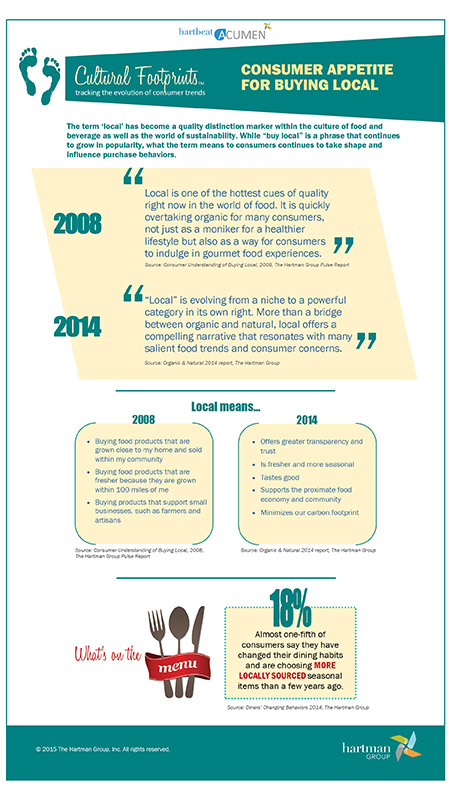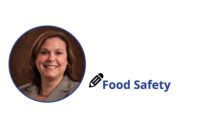Snacks, baked goods and diverse foods and beverages with local heritage and marketing have been increasingly making their appearance in diverse retail settings, ranging from farmers’ markets to mass retailers. As a mark of premium distinction, “local” is an increasingly important sign of quality within a crowded field of designations that speak to premium distinctions, including organic and natural “free from” products and those that are artisanal or handmade.
The Hartman Group has been tracking local’s rise in importance for years now. In the August 2014 “Organic & Natural 2014” report, we found that “the authenticity halo around organic and natural has begun to fade, and local foods and beverages are poised to surpass them as a symbol of trust and transparency.”
So what makes local “special” from the consumer’s perspective? Support of community and regional economics and foodways is one significant element. Whereas local previously acted as a philosophical bridge between organic and natural, currently the term offers a compelling narrative that resonates with many salient food trends and consumer concerns.
Local offers greater transparency and trust:
- Consumers believe local producers and small farmers have more integrity and are deeply invested in the quality of their products.
- Shorter commodity chains, smaller scales of production and proximity to the sources of their food bolster consumer trust.
- The ability to engage with and ask questions of local producers speaks to the desire for transparency and reciprocal relationships, which consumers feel is missing with bigger companies
- Sixty-two percent of consumers say they “try to understand where their products are made,” and 56 percent say they “try to buy products made in their region” (“Transparency 2015,” April 2015, The Hartman Group).
Local is seen as fresher, more seasonal and has strong links to organic shoppers:
- Consumers understand that products that travel shorter distances are likely fresher.
- Smaller production signals food that is in tune with the seasons and the unique qualities of the locale from which it comes.
- Organic shoppers find local highly appealing: Thirty-five percent of organic buyers said they were buying more local products today than a year ago (see Figure 1).
- Consumers attribute better taste and, in some cases, nutrition, to local foods.
- Purchasing locally produced food provides consumers with a sense of contributing to and supporting small farmers and their community.
- Local is seen to minimize the carbon footprint: Consumers visualize the notion that shorter supply chains represent environmental benefits by requiring less fuel for transport.
There is a strong upside to marketing “local,” especially for manufacturers, retailers and restaurants, where consumers see them as trusted allies in their quest for transparency and authenticity. Local producers and providers are seen as excelling in taking a stand on issues and demonstrating alignment with consumers’ values and priorities that link to local. These include pledges to support local small producers, not incorporate or carry GMOs, not stock unethical brands and be transparent about ingredients.
Marketing local is a big deal today, and we believe there is room for it to continue to exert its influence for years to come. Local is an on-trend cue of quality with strong links to healthier, more-sustainable lifestyles and gourmet food experiences, as well as even stronger ties to the emotional sentiments of supporting one’s communities, economy and environment. The upside to marketing “buy local” remains in being transparent and authentic.






